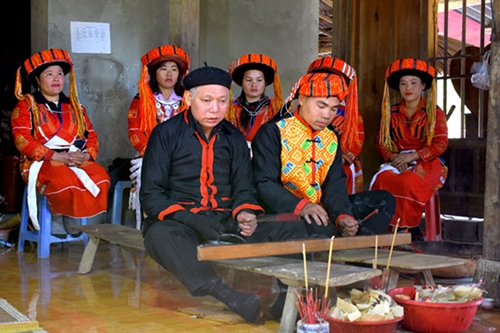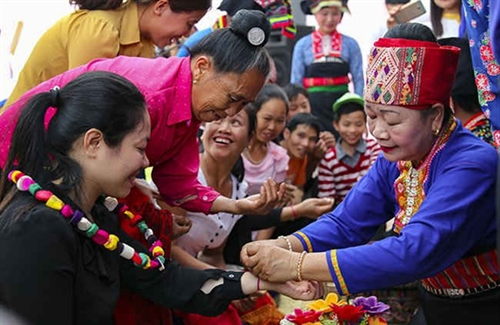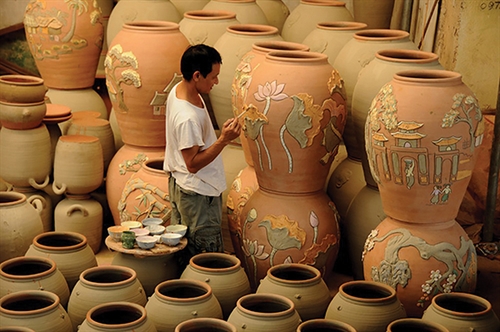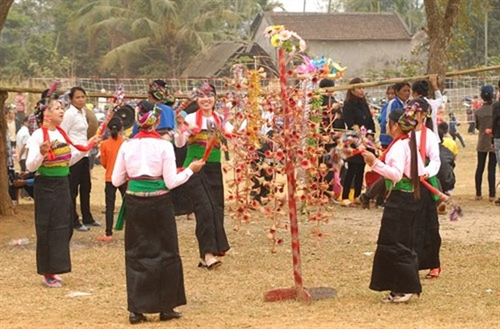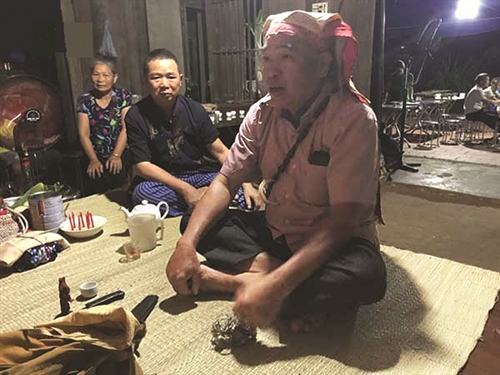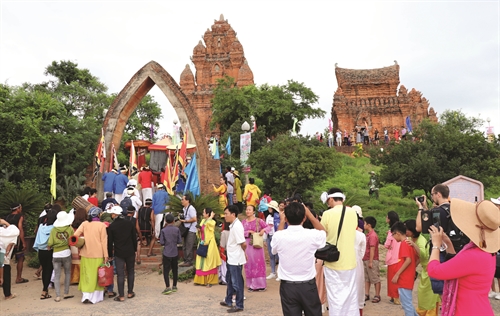Ta Thi Tam
Ethnology Institute
The Dao, a small Tay-Thai language group living in the northern mountainous part of the country, celebrate their village festival five times a year.
The Dao’s village festival, devoted to the rulers of heaven and earth, Ban Vuong (the forefather of the Dao) and the village’s tutelary god, seeks their support for peace and prosperity for the village.
The festival is an original community activity of the Dao, which honors the group’s cultural and religious values and helps build unity and ties among clans, families and individual villagers.
A Dao village holds its festival in the second, fourth, seventh, tenth and twelfth months of the lunar year. The festival is held on the first day of these months except in the last month when it is celebrated on the 20th as a celebration to see off the year.
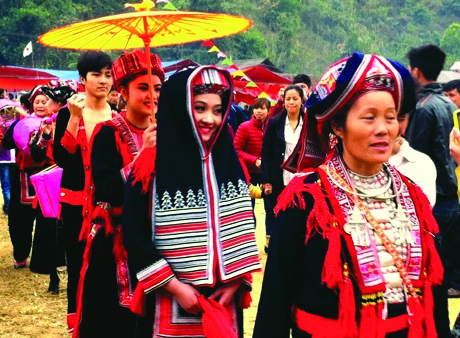 |
| A wedding of the red Dao in Phu Luu commune, Ham Yen district, Tuyen Quang province __ Photo: Internet |
The most important festival is held in the second month to welcome the lunar new year, followed by the one in the year end when villagers gather to count what they have gained throughout the year. The other three during the year aim to greet a new crop.
A Dao village festival consists of two separate parts, ritual formalities and festive activities. It has certain rules to strictly follow.
First, rituals of the festival must be conducted by the village patriarch at his home. The village patriarch is elected by villagers and must be a prestigious sorcerer who has passed le cap sac at the highest level. Le cap sac is a maturity ritual for a Dao man to become mature and be able to lead his own family. A man who has not passed this ritual is seen as immature. Le cap sac has three levels: three lamps, seven lamps and twelve lamps, which means the number of lamps the person passing the ritual is awarded. Only those passing the rituals with seven or twelve lamps can become a shaman because only at these levels, a shaman is believed to be recognized by gods and deities and can possess powerful magic.
When the village patriarch dies, his post may be passed to his grown up son, who has passed le cap sac. If he has no son or has a small son, villagers will elect another head.
Second, participants in rituals of the festival must be men, as they are regarded as the pillar of the family, shouldering the burden of clearing land for farming, hunting and protecting their families. The participating men must have passed le cap sac as well.
Next, participants must make contributions in kind even though participation in the festival is voluntary. The day before the festival, villagers bring to the village patriarch’s home pork, chickens, eggs, sticky rice and wine, which will be weighed, counted and recorded carefully by a person elected by villagers. After the festival, the use of these contributions will be made public to all villagers.
And last, participants must wear Dao traditional costumes and attend all formalities of the festival, from worshiping rituals to festive activities.
On the early morning of the festival day, villagers gather at the village patriarch’s home to prepare offerings for the festival and make a feast for villagers. The offerings are put on two trays each of which contains a boiled chicken, boiled pork, boiled eggs, sticky rice, sticky rice cakes, a bottle and five cups of wine, rice, some money, votive papers, a sword and two bamboo sticks. One tray is put on the altar dedicated to the rulers of heaven and earth and the tutelary god and the other on the altar of the Dao ancestors.
To conduct the worship ritual, the village patriarch and his assistant who is a shaman must wear traditional Dao costume, comprising an indigo short shirt worn inside, wide-crotch pants, a red or green short-sleeved blouse embroidered with colorful patterns on the sleeves, two dragons along the front tails and aquatic animal-shaped patterns on the back, and a long white scarf with embroidered patterns and black and red fringes.
Before praying, the village patriarch sits in front of the altars, pouring wine into the cups and burning incenses. The prayers are devoted to the rulers of heaven and earth, the tutelary god and Ban Vuong, asking for their support for favorable weather for bumper crops, peace, good health and luck for every family. Finishing every prayer, the village patriarch brandishes the sword up and down, a symbolic act to drive away evil spirits, and throws some rice on the ground to show gratitude to the gods. During the ritual, participants sit behind the ritual conductors, hearing their prayers and silently wishing the best for their village and families. After that, the village patriarch burns the votive papers to end the praying formality.
Then come ritual dances the first of which is a drum dance, praising for the Dao’s efforts to reclaim land for farming and animal breeding. Next is a martial dance to honor the group’s defense of their home land. Finally are two dances devoted to the dragon and phoenix spirits which are believed to protect crops from drought and pests.
The worship rituals are closed with a ceremony to see off the tutelary god back to heaven. Villagers then have a feast with traditional dishes such as chicken soups, bitter bamboo shoots, sticky rice and sour wine.
Festive activities, joined by all villagers, include responsive singing and folk games such as nem con (throwing a cloth ball through a ring), crossbow shooting and chess playing.-

